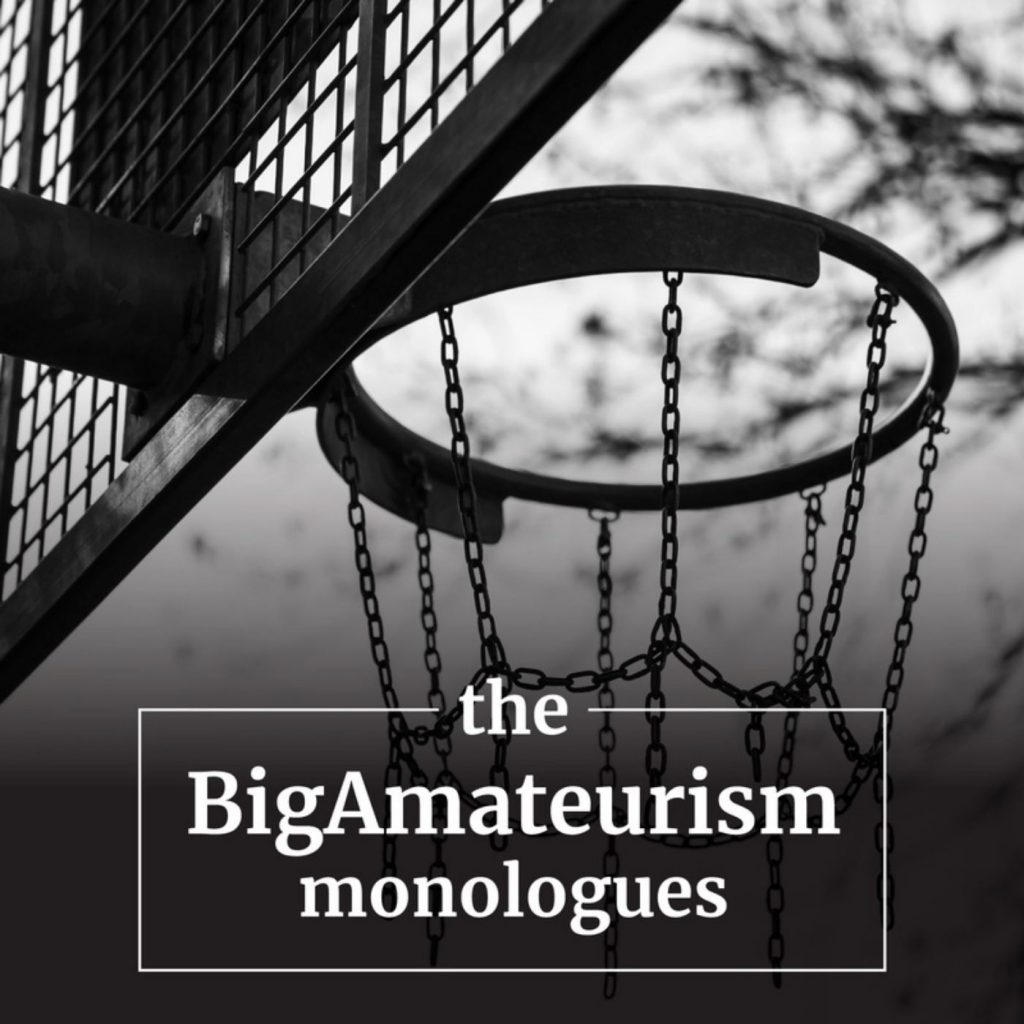Episodes
Since 2010, the Power 5 has solidified its complete market domination of BigAmateurism and sowed the seeds of a breath-taking bull market in college sports history. This era saw the rise of the Power 5 commissioners and the decline of college presidents as leadership figures in intercollegiate athletics. The Power 5 expanded its market presence and profitability through the College Football Playoff, Inc., creating conference networks, and enhanced regular-season TV packages. The Power 5 schools engage in reckless spending on facilities, coaches’ salaries, athletics administrative overhead, and expansion of sports teams. In March 2020, when COVID brought the most robust bull market in college sports history to an abrupt halt, the cracks in the foundation of BigAmateurism’s business model and historical tensions between the NCAA and big-time football and within the Power 5 conferences revealed themselves yet again. COVID changed the dynamics of the NCAA’s/Power 5’s campaign in the Senate and in the Alston suit for absolute control of the Iron Throne of college sports regulation. The January 5th special elections in Georgia undermined the NCAA’s/Power 5’s advantage in a Republican-controlled Senate and caused the NCAA to suspend indefinitely its claimed commitment to voluntary name, image, and likeness rules changes. The NCAA and Power 5 chose to pull back on their Senate campaign for antitrust immunity, federal preemption of state laws that conflicted with and superseded NCAA amateurism-based compensation limits, and a prohibition on college athletes being deemed employees of their university. Instead, they chose to wait on the outcome of the Alston case in the US Supreme Court. At oral argument on March 31st, the Supreme Court expressed hostility to the NCAA’s amateurism-based justifications for its compensation limits on athletes. These changed circumstances may have fundamentally changed the incentives in the NCAA/Power 5 prisoner’s dilemma.
In response to a question from US Supreme Court Justice Sonia Sotomayor on why the Power 5 conferences shouldn’t just be left alone to decide whether to offer the limited education-related benefits permitted by the district court’s injunction in Alston, NCAA attorney Seth Waxman said “…this is a classic example of a…prisoner’s dilemma in which national agreement is the only solution. There is no doubt that what has happened with respect to the pay of college coaches and other professionals will happen if conferences or individual schools are permitted to remove these restrictions.” The “prisoner’s dilemma” is a decision analysis that asks the question whether it is best for multiple interests with some conflicting incentives are better off cooperating for the greater benefit of all members or whether they are better off turning against each other and pursuing their individual self-interests. In essence, Waxman said that the only way for the NCAA to secure its monopoly and the Power 5 to preserve its cartel within the NCAA umbrella is to be protected at the national level (i.e., through a broad Supreme Court or Congressional antitrust immunity). Embedded in Waxman’s revealing metaphor is the shaky scaffolding of the relationship between the NCAA and Power 5 and among the Power 5. This episode explores the nature and evolution of these relationships—both between the NCAA and the Power 5 as a unified cartel and among the individual Power 5 conferences—going back to the 1950s. I use Keith Dunnavant’s 2004 book “The 50 Year Seduction: How Television Manipulated College Football, from the Birth of the Modern NCAA to the Creation of the BCS” to frame the historical analysis. I examine four eras, the first two in this episode and the next two in the following episode: (1) 1951-1981—the NCAA TV monopoly years and the cold war between what is now the Big Ten/Pac-12 on the one hand and what is now the ACC, Big 12, and SEC on the other hand ; (2) 1990 – 2010—the chaotic post-Board of Regents television market, the death of the College Football Association, conference realignment fever, the fragile financial interest convergence in football among the Power 5, the “reunification” of the Big Ten/Pac-12 with the Southern football conferences, and the creation of the Bowl Alliance and Bowl Championship Series; (3) 2010 – 2020—the solidification of the Power 5, the seeds of the greatest bull market in college sports history, the rise of the Power 5 commissioners and the decline of college presidents, the expansion of Power 5 market share, and the reckless spending in college sports; and (4) 2020-2021—how COVID exposed the cracks in the foundation of BigAmateurism, how the Power 5’s breathtaking political might influenced the NCAA’s/Power 5’s quest for the Iron Throne of college sports regulation in Congress, and how the January 5th special elections on Georgia fundamentally altered the NCAA’s/Power 5’s strategy.
The NCAA’s quest for federal antitrust immunity in the US Supreme Court is in the books. This episode does some clean-up work on issues I didn’t address in the first post-argument episode and also looks at some things that were left out of the argument. I also explore some examples of the NCAA’s conflation fetish which is designed to convince Congress and federal courts that Alabama football and Smith College rowing are two peas in an amateurism pod. You are also treated to a spontaneous gender equity rant by the host. I break down post-argument propaganda from the NCAA’s chief legal officer and also from NCAA President Mark Emmert who apparently didn’t get the memo that the NCAA’s quest for the Iron Throne of college sports regulation is still a covert operation. Oops!
Important Heads-Up for this Episode: I have an extended intro for this episode that includes a series of audio clips from the Supreme Court’s oral argument in Alston on 3/31. The full intro is about four and a half minutes. These clips cover the range of central issues raised during the argument, literally gavel to gavel. The transcript of the argument (from the Supreme Court website) can be found here with page citations (“TR”) for each clip. The speakers you will hear (in the order presented in the clips) are as follows:
(1) Chief Justice John Roberts announcing the case (TR, 4)
(2) NCAA lead attorney Seth Waxman’s introductory argument (TR, 4-5)
(3) athletes’ lead attorney Jeffrey Kessler’s introductory argument (TR, 42)
(4) Justice Elena Kagan’s comments on amateurism-based compensation limits as amounting to price-fixing [during the NCAA’s argument] (TR, 24-25)
(5) Justice Neil Gorsuch’s comments on NCAA monopoly/monopsony power combined with price-fixing to limit the labor market for revenue-producing athletes [during NCAA argument] (TR, 29)
(6) Justice Brett Kavanaugh’s comments on “disturbing” NCAA justification for price-fixing [during NCAA argument] (TR, 33)
(7) Justice Sonia Sotomayor’s questions on athletes’ waiver of claims for an open and free market for the value of athletes’ services [during athletes’ argument] (TR 52-53)
(8) Justice Kagan’s question/comments on fear of “floodgate” of litigation if the Ninth Circuit opinion is upheld [during athletes’ argument] (TR, 56)
(9) Justice Kavanaugh’s question/comments on “floodgate” of litigation concerns [during athletes’ argument] (TR, 60-61)
(10) Solicitor General Elizabeth Prelogar’s (representing the United States) argument on the relevance of NCAA’s conceptualization of amateurism as relevant only as procompetitive justification for compensation limits rather than its value as a free-standing normative principle (TR, 69-70)
(11) General Prelogar’s closing argument opposing the grant of an antitrust exemption to the NCAA (TR, 86-87)
(12) Waxman’s closing rebuttal argument for NCAA control of the Iron Throne of college sports regulation and Justice Robert’s submission of the case at the close of all arguments (TR, 90)




